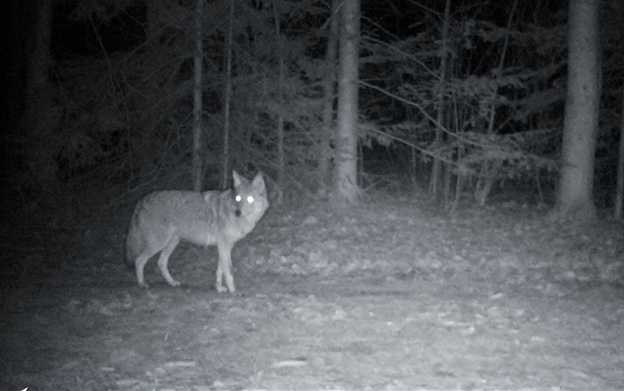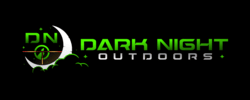Your choice in a thermal rifle scope has the potential to be as impactful in your nocturnal sporting pursuits than your choice of rifle.
Just as your choice of rifle chambering will impact your effective range and the quarry you can ethically dispatch, so too will your thermal scope selection determine range and target identification, particularly in complete darkness and potential under less-than-ideal conditions.
With that said, let’s get into some of the things you should consider when evaluating your first thermal rifle scope.
Thermal Sensor
The thermal sensor is the heart of the scope, and it is responsible for detecting thermal signatures and relaying them to the display so you can see the target. While there are many elements involved in assessing quality, 4 of the most important are detection range, thermal sensor resolution, frame rate, and NETD rating.
Detection Range
A thermal rifle scope’s detection range determines how far off the scope’s sensor can detect and identify a thermal signature. Many high-quality thermal scopes have detection ranges of 700-800 yards or more, with some capable of detecting a heat signature more than a mile off.
While you don’t necessarily need to be able to identify a target a mile away, the farther off you can see a target, Generally the better.
Resolution
A thermal rifle scope’s sensor resolution, measured in pixels, is one of the primary factors that determines how detailed an image will be. As a general rule, the higher the two numbers, the sharper the image will be. For instance (and holding all else equal) a sensor with a resolution of 640x480 will produce a sharper, more detailed image than a scope with a 384x288 resolution.
Another thing to consider here is pixel pitch, which is the distance between the central points of two pixels in the image. A lower pixel pitch is better; consequently, what you ideally want is a scope with a high sensor resolution and a low pixel pitch.
Frame Rate
Frame rate, also known as refresh rate, is the speed at which the sensor regenerates the image. The higher the frame rate, the cleaner and smoother the image on the display will be. While a thermal rifle scope with a higher frame rate will be more expensive, it will produce less lag, which is critical when you’re tracking a moving target. Ideally, you want a scope with a frame rate of 50Hz or higher.
NETD Rating
Along with resolution, a sensor’s NETD rating is one of the most important determinants in display quality and clarity. A sensor’s NETD rating is measured in mK or “millikelvins” and refers to its sensitivity with respect to picking up differentials in temperature. The lower the NETD rating, the more sensitive the sensor is, and the clearer and crisper the image on the display will be.
As with frame rate, a thermal scope with lower (and therefore more sensitive) NETD rating will cost more, but you’ll want one with a NETD rating somewhere between 25 and 20 mK, if not lower.
Objective Lens Diameter and Field of view
Objective lens diameter contributes to a larger field of view. The wider the field of view, the more you’ll be able to see at a given range. Larger objective lenses allow more radiation (heat) to pass through the germanium lens giving you better image quality. Keep in mind, however, that thermal scopes with larger objective diameters will cost more as Germanium lenses are very expensive to produce.
Another similar item to keep in mind is magnification setting. Some scopes are equipped with variable magnification settings that can make it easier to identify and connect with targets at extended ranges.
Base Magnification
Consider the environment you will be using your thermal. Most thermal scopes have only a single base magnification. Base magnification provides the clearest picture quality or the full resolution produced by the sensor. Lower base magnifications provide a larger field of view but will not be as clear at longer distances, especially on smaller targets like a coyote. As a general rule, hog hunters prefer a lower base magnification (between 1.5 and 2x) producing a larger field of view, and good for hunting large animals at shorter distances. Coyote hunters generally prefer higher base magnifications (3x to 4x) which provides better image or identification range when hunting smaller animals at larger distances. The environment in which you hunt can also play a factor. Hilly, short distance or heavily wooded areas benefit from a smaller base magnification versus a flat open area that is better suited for the higher base magnifications.
Variable Magnification: Digital vs Ocular
There are 2 types of variable magnification (Zoom) technologies on thermals the first and most widely used is Digital Zoom which works by cropping a portion of the image and then stretching it to fill the screen. This process is done digitally and is the cheapest option but also stretches the pixels and produces poor to very poor (grainy) image quality the further you magnify. To give an example of this a 640x480 sensor is the maximum resolution you can achieve at the base magnification. If your base magnification is 2x and you double the magnification to 4x power, you drop the image quality to 320 x 240. To take this a step further a 384x288 with a base mag of 4x is actually a better image quality and generally a more cost effective option.
The second type of magnification available today and a newer technology than Digital magnification called Ocular Magnification. Ocular magnification is achieved through a series of lenses inside the scope by rotating a lever near the diopter lens (eye piece). The advantage to this method of magnifying is unlike digital magnification you do not lose any resolution because you are simply zooming in on the screen you are viewing. This method does make the quality or resolution the screen is capable of displaying more important. If you zoom in on a 1024x768 resolution screen you will start to see the pixels in the screen, some higher end scopes offer a 2560x2560 display that virtually eliminates seeing pixels as you zoom in on the screen, because the pixels are much smaller.
Mounting Options
How a thermal rifle scope mounts to your rifle is another thing to keep in mind. For simplicity’s sake, consider getting a scope with a standard 30mm tube, especially if it’s your first scope. These will be compatible with standard rifle scope rings, streamlining mounting.
Durability
While durable thermal imaging scopes are more affordable, it’s worth it for you to pay a little more for a scope with a better IP rating. This is especially true for hunters, who may operate their scopes in rain, snow, fog, wind, and other adverse conditions. The higher the IP rating, the better the scope will stand up to chronically humid, wet, or dusty conditions.
Operating Temperature Range
A common operating temperature range among thermal rifle scopes is -4℉ to 122℉. While this will likely work just fine for most hunters across the country, be sure that the scope you buy offers an operating range that’s suitable for the conditions you routinely experience. The last thing you want is to buy a scope that won’t work, for example, in bitterly cold temperatures, especially if you frequently deal with them. Many scopes on the market will perform well below the temperatures stated but it does significantly reduce the battery life of lithium batteries.
Recoil Resistance
Another factor to consider is the recoil resistance of the scope in question. Be sure you buy one that is rated to withstand the recoil of your rifle. If not you could damage the scope. Most scopes are rated to the equivalency of an average recoil produced by a .375 H&H or 12 guage shotgun. Some higher end scopes are rated for larger calibers.
Built-in Memory and Video Recording Capabilities
Almost all thermal rifle scopes have built-in memory, picture-in-picture functionality, and can record both stills and video. If you plan to log your hunt or record it, make sure you get a scope that has the features and settings you need for that purpose.
Recoil Activated Recording
Recoil Activated Recording (RAV) or Shot Activated Recording (SAR) is convenient for those who like to record hunts but often forget to hit the record button in the heat of the moment. RAV or SAR as some manufactures refer to it, works like a DVR you use on your television or some security systems. When this feature is activated it will start recording constantly, when a shot is fired or recoil is felt by the scope. It will cut and save a clip of the recording, typically a predetermined amount of time before and after the shot. Some scopes allow you to adjust the amount of time before and after the shot in the settings, others may not have the functionality to do so.
Reticle Options and Color Palette

Many thermal rifle scopes come with multiple reticle display options and a variety of color palettes for the image generated. A thermal scope that offers a crimson palette is good for night hunting since red light won’t ruin your night vision, helping to prevent “night blindness.”
Price
Lastly, you have to consider price, especially if this will be your first thermal rifle scope. While it might be enticing to try to find the cheapest scope possible, it’s a better idea to shop by the features and make sure the scope offers the functionality you need for your intended application. Then you can narrow down your options by price.
Get Your First Thermal Rifle Scope at Dark Night Outdoors
Your next thermal scope is here, whether it’ll be your first or you’re just upgrading. We represent the best brands in the industry, including iRayUSA, Nocpix, RIX, PULSAR thermal optics, and many others. Shop our collection and if you have questions about features, settings, rating or functionality, get in touch with us directly and we’d be happy to help.


